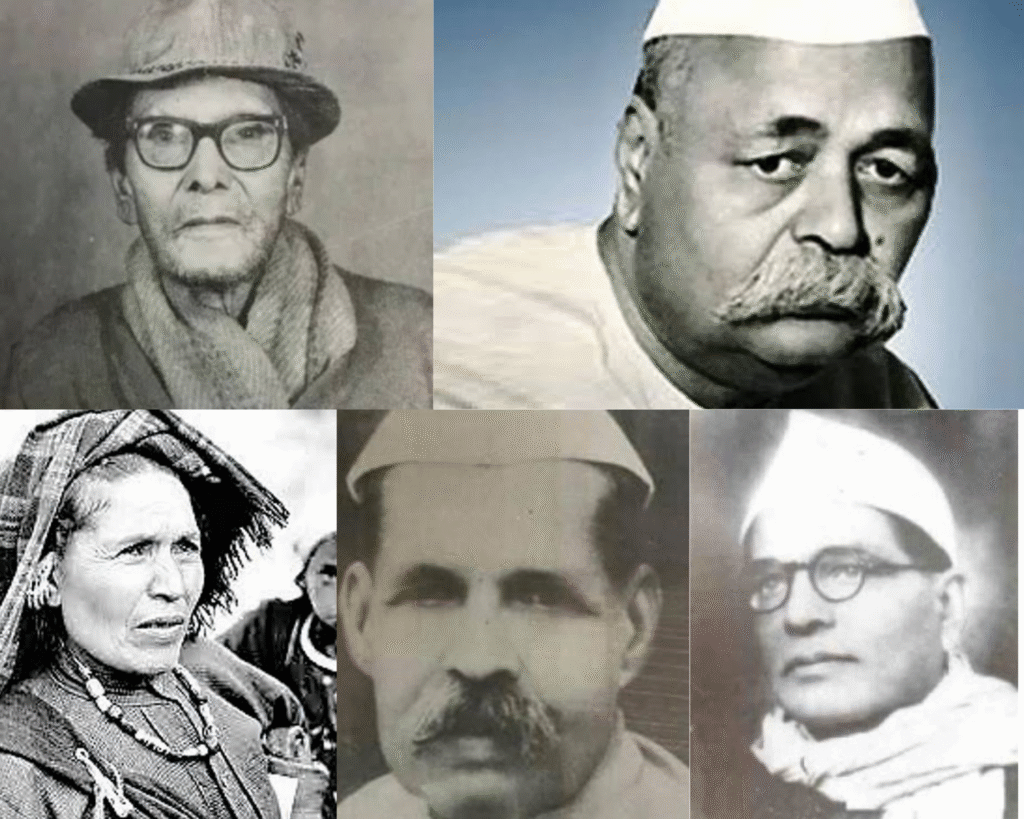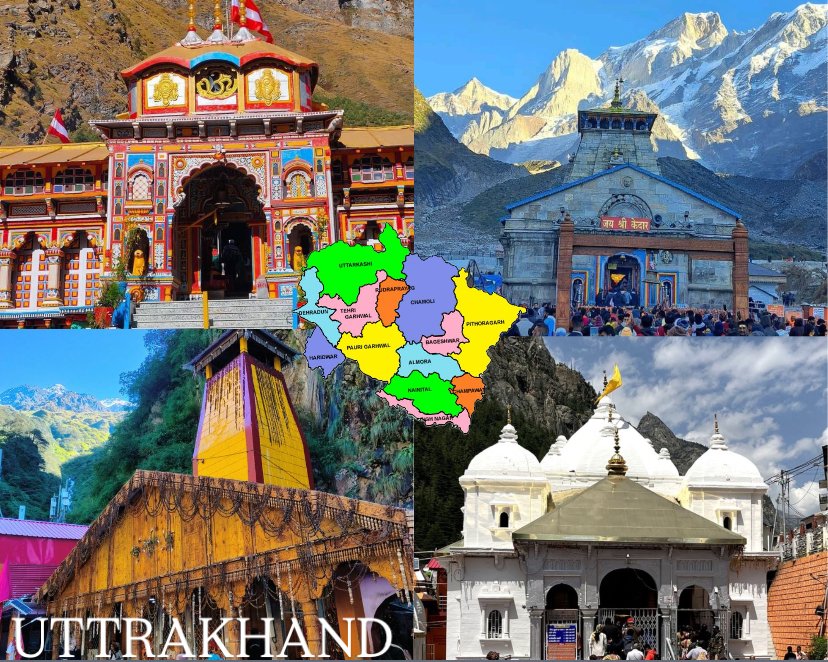When you hear the word Uttarakhand, chances are the first thing that pops in your head is Devbhoomi – the Land of Gods. And honestly, that’s not an exaggeration. The state is tucked up in the Himalayas, surrounded by snowy peaks, wild rivers, and valleys that look straight out of a painting. But behind the beauty, there’s also a deep ancient history of uttarakhand – one that mixes myths, old dynasties, foreign invasions, and finally, the long fight for its own identity.
Now, the state as we know it was officially created on 9 November 2000. But the story goes way, way back. To really understand it, we’ve got to look at different layers – from epics like Mahabharata, to medieval rulers, to the British, and then the long statehood movement. So let’s walk through this journey The ancient history of uttarakhand is filled with stories of culture, rulers , and traditions that gives this land the title devbhoomi.
ANICENT UTTRAKHAND -LANDS OF GODS AND MYTHS
If you dig back into the earliest times, humans were here even in the Stone Age. Archaeologists have found remains that prove people lived in these mountains long before written ancient history of uttarakhand. But what makes Uttarakhand ancient history stand apart isn’t just survival – it’s the spiritual vibe attached to it.
The region is all over our scriptures. The Vedas, Puranas, Ramayana, Mahabharata – they all talk about these mountains. It’s believed Rishi Vyasa wrote the Mahabharata in these very valleys
. And the Pandavas, during their exile, wandered here seeking blessings. In fact, many believe their final journey towards heaven (the Mahaprasthan) passed through the Uttarakhand peaks.
Then there are the rivers. The Ganga starts from Gangotri, and the Yamuna from Yamunotri. For Indians, these aren’t just water streams – they’re living deities. For centuries, pilgrims have climbed tough terrain just to take a dip in the icy water. The idea is simple: one dip, and your sins are washed away. Whether you believe it or not, millions still come every year, proving how deep the faith runs.
And of course, the temples – Kedarnath, Badrinath, Jageshwar, and many others. These aren’t just monuments; they’re places where people have prayed for thousands of years. Even now, the Char Dham Yatra pulls in devotees from across the country

THE MEDIEVAL KINGDOMS – KUMAON AND GARHWAL
As time moved forward, Uttarakhand ancient history wasn’t just about saints and pilgrims. Proper kingdoms developed here, each shaping the region in their own way.
KATYURI DYNASTY (7th-11th century)
The first big name you hear is the Katyuri dynasty. Their capital was Baijnath in the Katyur Valley. They were powerful, stretching influence even into Nepal and Tibet. The best part is the temples they left behind – beautiful stone structures that are still standing, quietly telling their story. But their rule wasn’t tightly centralized, which eventually weakened them. By the 11th century, their power was fading.
CHAND DYNASTY IN KUMAON (11th-18th century)
After the Katyuris came the Chand rulers. They started in Champawat and later shifted to Almora. These kings promoted farming, set up trade with Tibet, and built temples and forts that still define Kumaon’s heritage. If you ever walk around Almora, you’ll feel their presence.
PARMAR (PANWAR) DYNASTY IN GARHWAL(19th-20th century)
Meanwhile, over in Garhwal, the Parmar dynasty rose under Raja Kanak Pal around the 9th century. They made Srinagar (Garhwal) their capital. Unlike many others in North India, Garhwal managed to stay independent most of the time. They even pushed back Mughal attempts in the 16th and 17th centuries. That stubborn spirit? It’s something Garhwal is still proud of.
JAUNSAR BAWAR – A diffrent story
Now, not every part of Uttarakhand followed the same kingdom model. The Jaunsar-Bawar region, between the Yamuna river and the Himalayan ridges, was home to the Khasa people. They worked more with local chiefs and village councils than with centralized kings. Later Garhwal rulers extended some control here, but villages largely kept their independence.
GORKHA INVASION AND THE BRITISH
Fast forward to the early 1800s. This was a chaotic time. In 1803, the Gorkhas from Nepal invaded Kumaon and Garhwal. For about 12 years, they ruled with a heavy hand – high taxes, forced labor, harsh administration. Locals still remember those days bitterly.
But the Gorkhas picked a fight with the wrong people – the British East India Company. The Anglo-Nepalese War (1814–1816) broke out. The Gorkhas fought bravely but lost. The Treaty of Sugauli forced them to retreat.
After that:
• Kumaon and eastern Garhwal went under direct British rule.
• Western Garhwal was given back to the Tehri king, who continued as a princely ruler.
This marked the start of British colonial influence in the hills. Roads, schools, and a few institutions came up, but exploitation was never far behind.

UTTRAKHAND IN FREEDOM STRUGGLE
Even though it’s a mountain state, Uttarakhand wasn’t silent during the freedom struggle. Many leaders from here left a strong mark.
• Veer Chandra Singh Garhwali (1891–1979): A soldier who became a legend when he refused British orders to fire on unarmed protesters during the 1930 Peshawar incident.
• Govind Ballabh Pant (1887–1961): Born in Almora, he became a national leader, later India’s Home Minister.
• Badri Dutt Pandey (1882–1965): Nicknamed “Kumaon Kesari,” he fought against the oppressive Coolie-Begar system where locals were forced to do unpaid labor.
• Hargovind Pant: Founder of the Kumaon Parishad, he pushed for political rights for hill people.
• Gaura devi (1925-1991): Not during colonial times but later, she became the face of the famous Chipko Movement in 1973, where women literally hugged trees to stop deforestation.
So yeah, Uttarakhand wasn’t just sitting on the sidelines. It was contributing actively.
The Statehood Movement – A Long Wait
After India became independent in 1947, Uttarakhand was merged into Uttar Pradesh. But honestly, it didn’t work out well. The mountain people felt ignored – development was slow, terrain was tough, and cultural differences were real.
By the 1990s, frustration had boiled over. Protests demanding a separate state started growing stronger. Women, youth, students – everyone joined. At times, police cracked down, but the movement didn’t stop.
Finally, on9 november 2000 the demand was fulfilled. A new state called Uttaranchal was born. In 2007, the old cultural name “Uttarakhand” was restored.
Modern Uttarakhand – Tradition and Progress Together
Today, Uttarakhand is a mix of old traditions and modern growth.
• Religious Tourism: The Char Dham – Kedarnath, Badrinath, Gangotri, Yamunotri – still attract millions.
• Adventure Tourism: Trekking in the Valley of Flowers, rafting in Rishikesh, skiing in Auli – the list keeps growing.
• Wildlife and Nature: Jim Corbett National Park, Nanda Devi Biosphere Reserve, alpine meadows, rivers – all make it a paradise for nature lovers.
• Military Pride: A large number of people from here serve in the Indian Army, keeping alive a tradition of bravery.
CONCLUSION
The history of Uttarakhand is like a layered story – myths, kings, invasions, freedom struggles, and finally, a new state. From Vyasa writing epics to women hugging trees, from resisting Mughals to marching for statehood, the land has always shown resilience.
And today, when you walk through its valleys or sit quietly near the Ganga in Rishikesh, you realize – this isn’t just another state. It’s a living story, still unfolding

